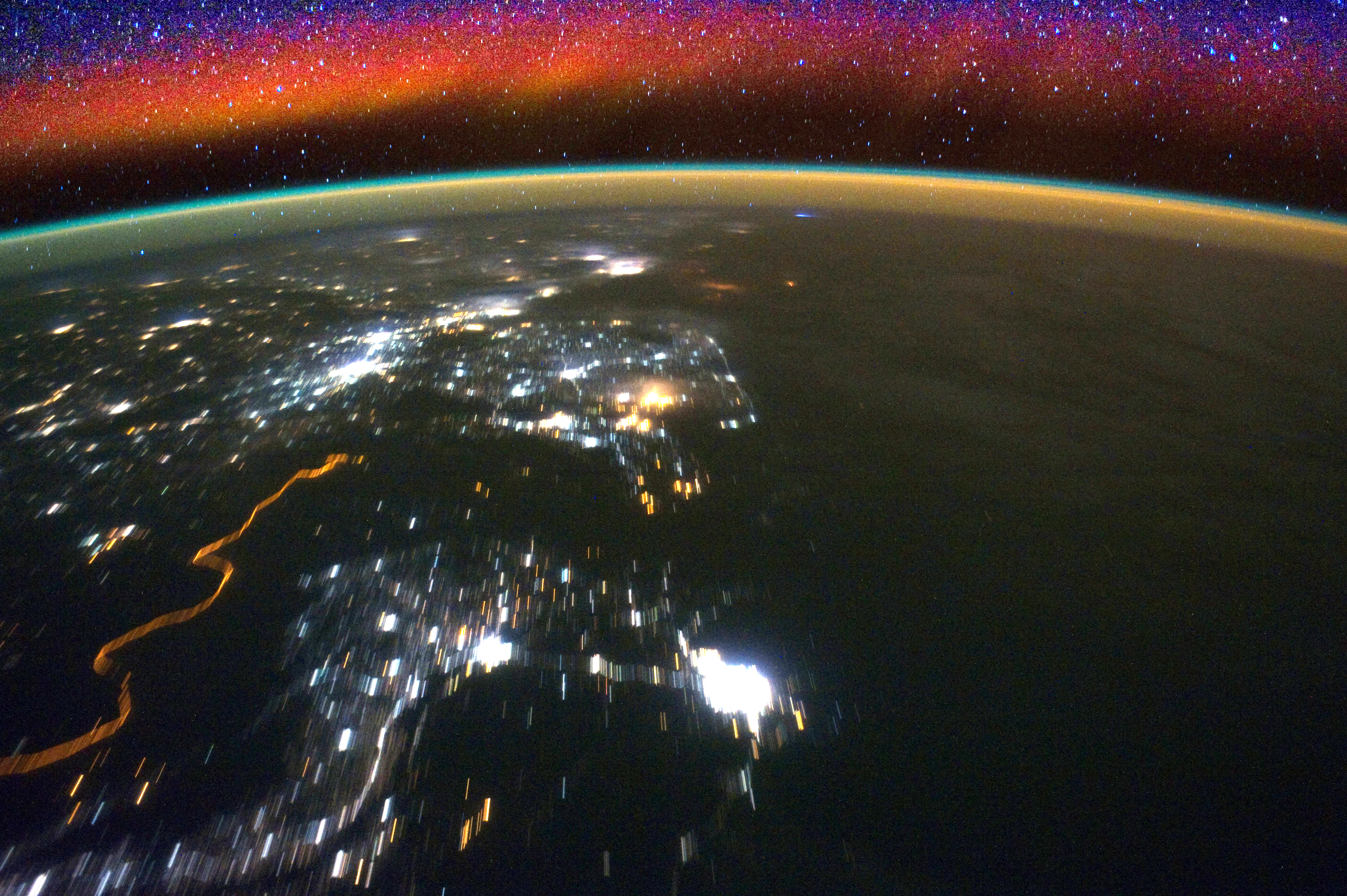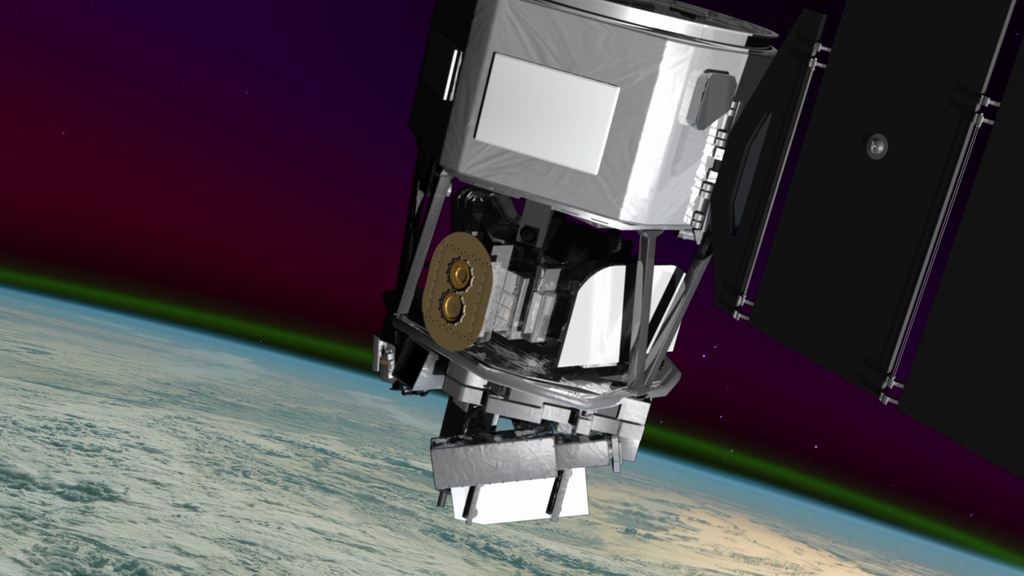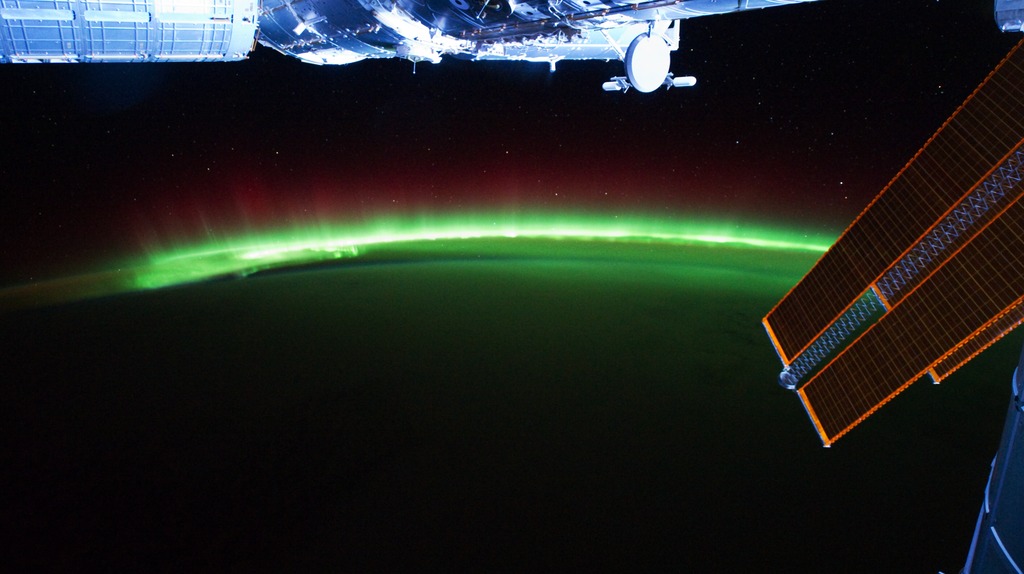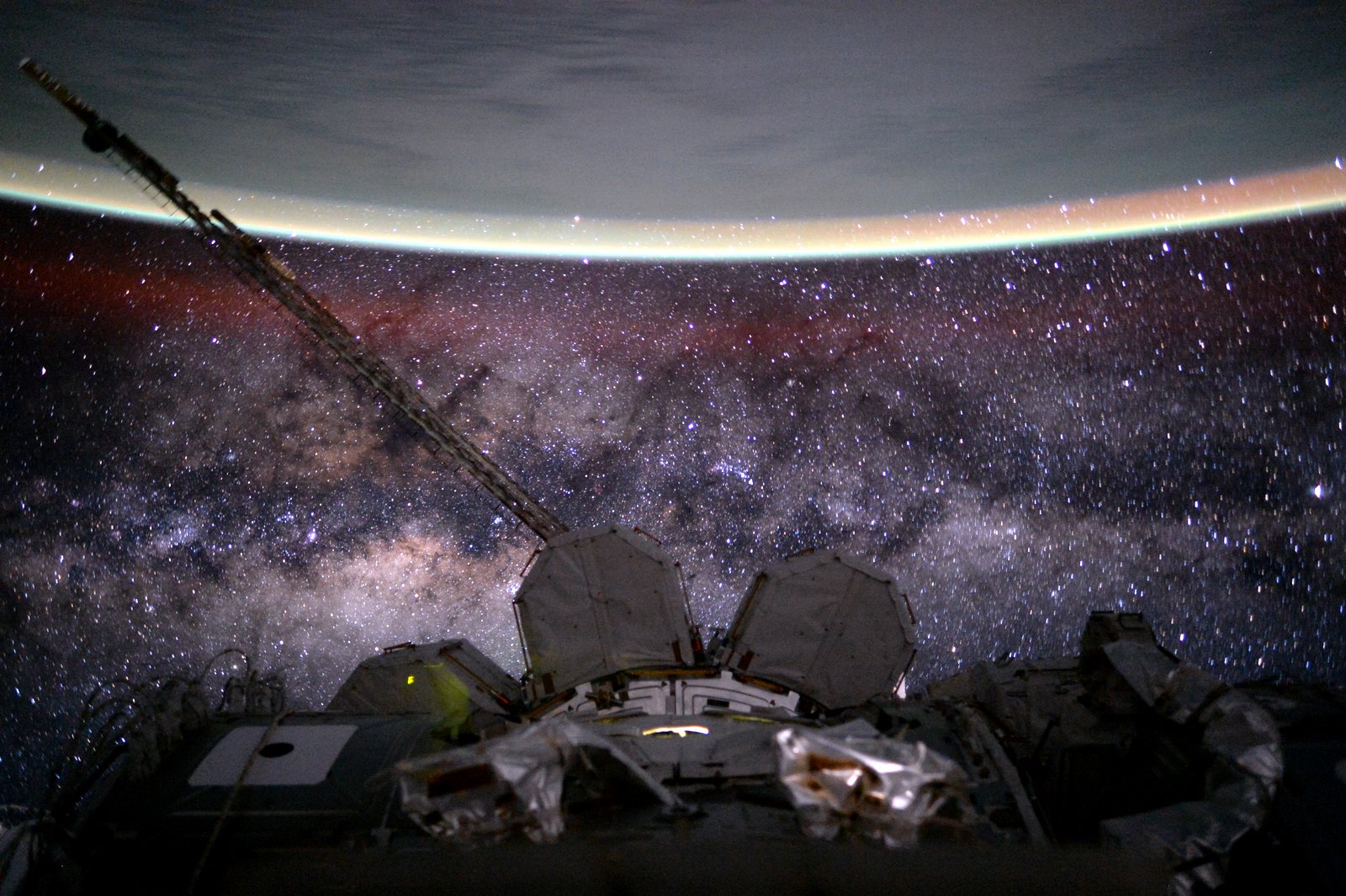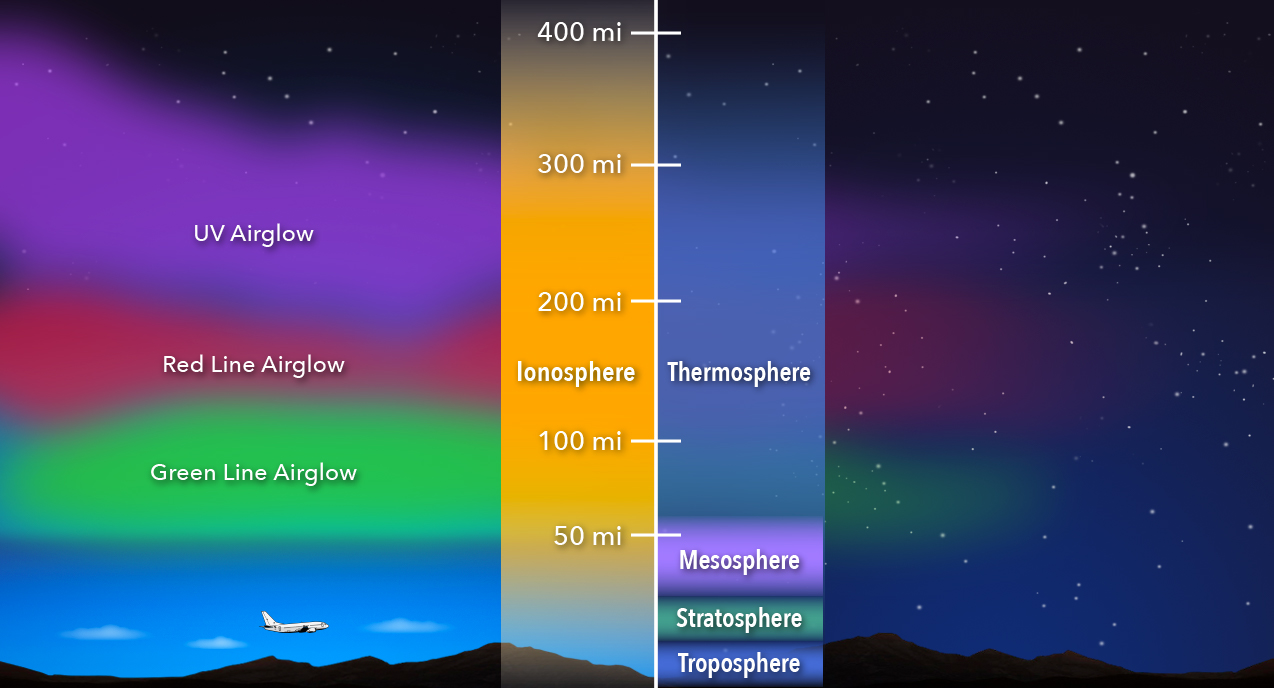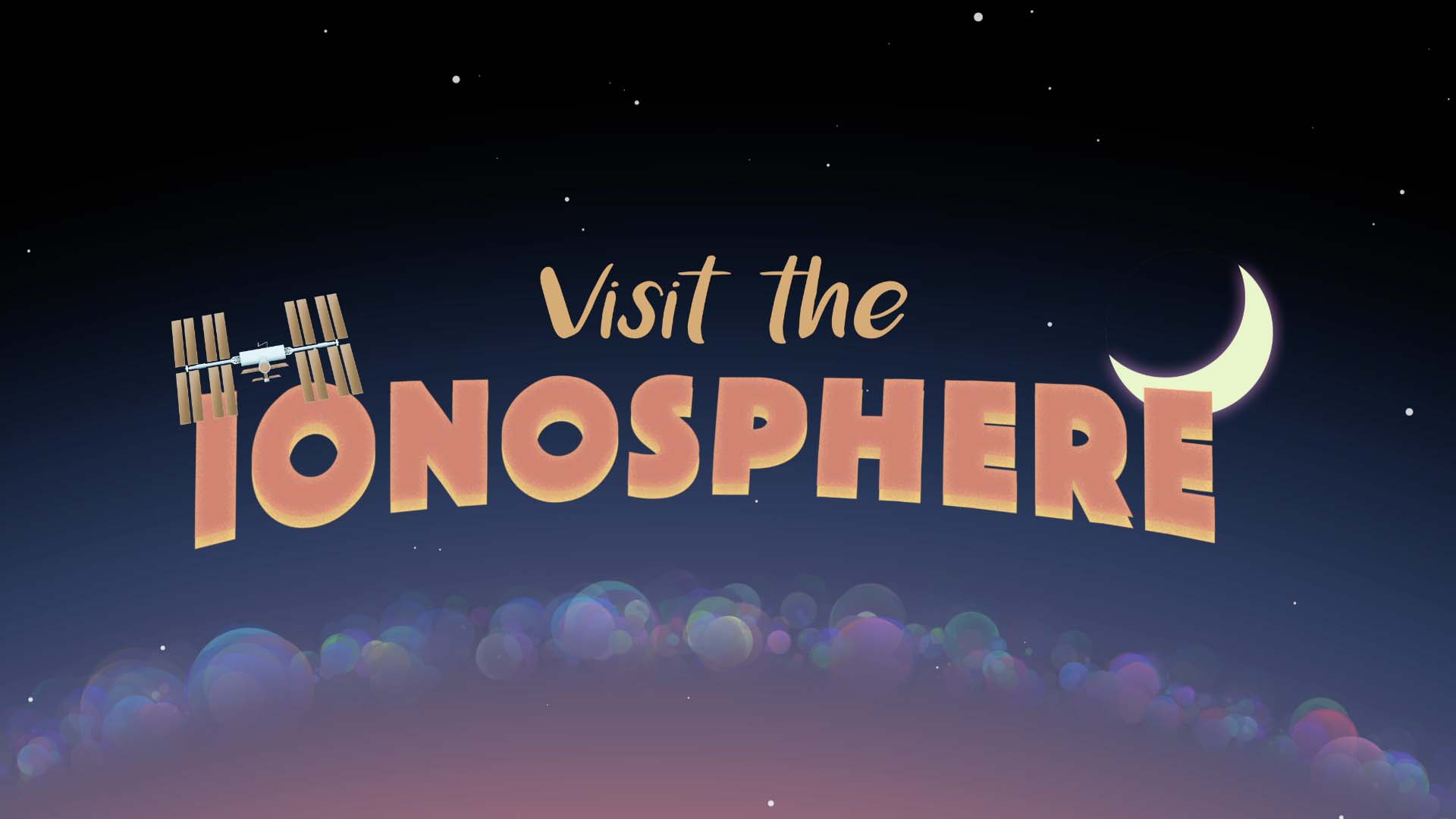The Secrets behind Earth’s Multi-colored Glow
What does our planet look like from space? Most are familiar with the beloved images of the blue marble or pale blue dot — Earth from 18,000 and 3.7 billion miles away, respectively. But closer to home, within the nearest region of space, you might encounter an unfamiliar sight. If you peer down on Earth from just 300 miles above the surface, near the orbit of the International Space Station, you can see vibrant swaths of red and green or purple and yellow light emanating from the upper atmosphere. This is airglow.
Airglow occurs when atoms and molecules in the upper atmosphere, excited by sunlight, emit light in order to shed their excess energy. Or, it can happen when atoms and molecules that have been ionized by sunlight collide with and capture a free electron. In both cases, they eject a particle of light — called a photon — in order to relax again. The phenomenon is similar to auroras, but where auroras are driven by high-energy particles originating from the solar wind, airglow is energized by day-to-day solar radiation.
Music: "Nature Daydream" by Laurent Dury [SACEM], "Grape Picking" by Laurent Dury [SACEM] from Killer Tracks
Complete transcript available.
Watch this video on the NASA Goddard YouTube channel.
For More Information
Credits
Please give credit for this item to:
NASA's Goddard Space Flight Center
-
Scientists
- Sarah L. Jones (NASA/GSFC)
- Scott England (Space Sciences Laboratory, University of California at Berkeley)
-
Producer
- Joy Ng (USRA)
-
Animators
- Krystofer Kim (USRA)
- Joy Ng (USRA)
-
Writer
- Kathalina Tran (SGT)
-
Graphic designer
- Mary P. Hrybyk-Keith (TRAX International)
Release date
This page was originally published on Monday, October 22, 2018.
This page was last updated on Wednesday, May 3, 2023 at 1:46 PM EDT.
![Complete transcript available.Music Credit: “Genosequence” by Alessandro Rizzo [PRS], Elliot Greenway Ireland [PRS] via Universal Production Music](/vis/a010000/a014400/a014464/14464_AWEOverview_Thumb.png)
